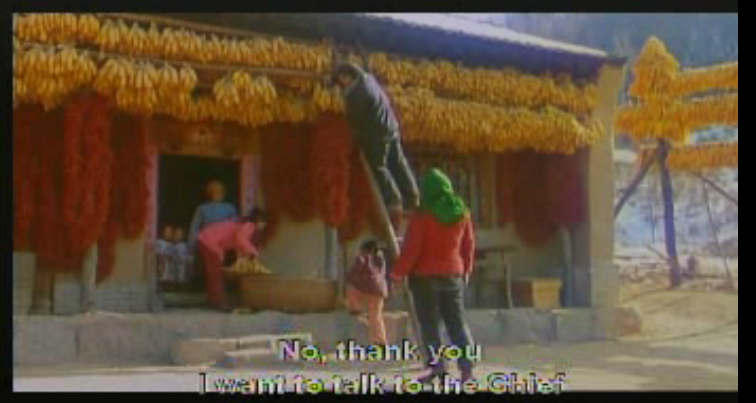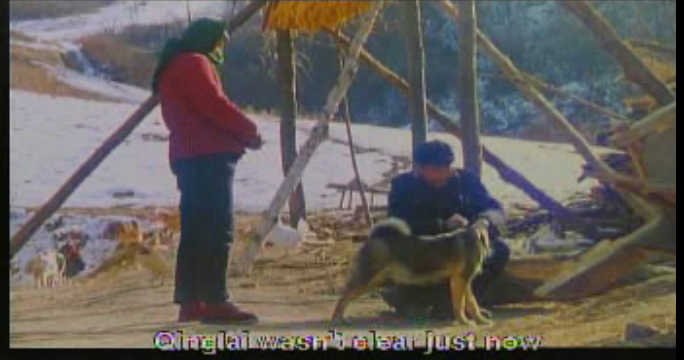It is possible to say that the film The Story of Qiu Ju is aimed at creating a realistic portrayal of life in a Chinese village and this realism is achieved with the help of different formal elements such as mise-en-scène, sound, as well as editing.
This is the main thesis that should be discussed in more detail. This movie can give readers deep insights into the challenges that Chinese peasant faced. This point can be better illustrated analyzing different shots from this movie and the way in which they are related with one another. These are the main questions that should be examined in this paper.
One can take a look at the first shot of this sequence; it lasts approximately five seconds. In this part of the sequence, the film-makers attempt to show the mode of life in a village family. In particular, the viewers can see the house of Wang Shantang and its yard (The Story of Qiu Ju).
In this case, the authors prefer take a medium long and low-level shot. This approach enables the camera operator to demonstrate that every member of Wang Shantang’s family has to work almost continuously in order to make ends meet (The Story of Qiu Ju). This technique can give viewers a better idea about this household. The following picture illustrates the technique used by the authors of this film:

Figure 1: Qiu Ju stands in front of Wang Shantang’s House (The Story of Qiu Ju)
Additionally, one should not forget that the film includes mostly diegetic sounds. This means that the source of sound is either directly visible, or at least one can understand where it comes from. For example, one can speak about the voices of people, the sounds of birds and animals, especially poultry.
The absence of non- diegetic suggests that the authors intend to recreate the atmosphere in the village in a very meticulous way. Under such circumstance, the inclusion of a sound-track or third-person narration might not be suitable. Additionally, the house of Wang Shantang is located at the center of the composition, and this detail is vital for describing the household of the family. These are some of the details that immediately attract the attention.
The realistic portrayal of peasant life can be seen in other shots included in this sequence. For example, one can look at the scene when Wang Shantang and Qiu Ju talk to one another. In this case, the camera operator also decides to take medium long and eye-level shots. This technique is important because in this way, one can better describe the main characters who are in conflict with one another. For example, people can clearly see that the characters live in very harsh conditions.
This is one of the aspects that should be considered. Moreover, the viewers can notice that the family of Wang Shantang is greatly depending on farming. One can refer to such details as poultry and livestock in the background, since these details are very informative. These are some of the main aspects that should not be disregarded.

Figure 2: Qiu Ju and Wang Shantang talk to one another (The Story of Qiu Ju).
The two characters are at the center of the composition, while in the background one can see almost desolate mountain landscape (The Story of Qiu Ju). This form of composition is an important element of mise-en-scène since the viewers can notice how the characters are dressed.
One can even speak about the poverty of these people. This is another issue that should be taken into account. Although, these people are opposed to one another, they encounter the same hardships. Similarly, this shot is based on the use of diegetic sounds, namely voices of people and the sounds of animals.
Another aspect that should be considered is the editing of this sequence. Close attention should be paid to the length of shots. On the one hand, the authors use editing in order to increase the tempo of the sequence. This approach is achieved by making cutting the sequence into relatively short shots.
However, at the same time, the shots are lengthy enough so that viewers can better discern the details of various scenes, especially the household. This is one of the details that one can distinguish. It is possible to argue that the authors are able to create a dynamic and realistic sequence. This is one of the main arguments that can be made.
On the whole, these examples show that The Story of Qiu Ju is a good example of realistic cinematography. By using long-range shots and diegetic the film-makers are able to recreate the atmosphere of a Chinese village in which people have to cope with a great number of challenges.
The formal elements used by the authors should be examined because they indicate how one can express complex ideas with the help of editing, sound, and shooting. The analysis of this approach can be a very useful activity because it illustrates the techniques used by cinematographers.
Works Cited
The Story of Qiu Ju. Ex. Prod. Zhang Yimou. Beijing: Sony Pictures Classics, 1992. DVD.